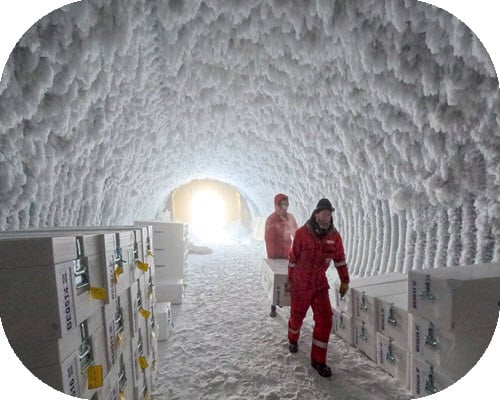News
International Research Team Extracts 1.2 Million-Year-Old Ice Core from Antarctica, Unlocking Climate Secrets
As of January 13, 2025, an international team of scientists has achieved a groundbreaking milestone in climate research by successfully retrieving an ice core estimated to be 1.2 million years old from deep within Antarctica.
This monumental effort, part of the Beyond EPICA project, involved drilling nearly 2.8 kilometers (approximately 1.7 miles) into the Antarctic Ice Sheet to reach the ancient ice, which is believed to hold invaluable insights into Earth’s climate history.
The extraction process took place over four Antarctic summers, during which a dedicated team of 16 scientists and support staff braved extreme temperatures averaging -35°C (-31°F). The core, measuring 9,186 feet in length, contains ancient air bubbles that encapsulate atmospheric conditions from a time long before modern industrialization. Carlo Barbante, the project coordinator, described the core as a time machine that provides an extraordinary archive of Earth’s climate.
The ice core was retrieved from a site known as Little Dome C, strategically chosen for its potential to yield some of the oldest ice on the planet. The successful drilling not only marks a significant scientific achievement but also positions this research as vital for understanding historical shifts in greenhouse gas concentrations and their impact on global temperatures.
The air bubbles trapped within the ice core offer a direct glimpse into past atmospheric compositions, including greenhouse gases like carbon dioxide and methane. By analyzing these components, researchers aim to reconstruct how Earth’s climate responded to various climate forcing factors over millennia.
This information is crucial for understanding the intricate relationship between greenhouse gases and global temperature fluctuations throughout Earth’s history. Barbante emphasized that this research could illuminate significant questions about climate changes that occurred between 900,000 and 1.2 million years ago, a period associated with disruptions in glacial cycles.
The findings from this ice core are expected to contribute significantly to our understanding of climate evolution and may help address pressing concerns regarding current climate change trends.
The successful extraction of this ancient ice core represents a monumental step forward in climate science. As researchers begin to analyze the data contained within this remarkable sample, the insights gained could play a pivotal role in shaping our understanding of past climates and informing future climate policies.
The international collaboration behind this project highlights the importance of global cooperation in addressing one of the most pressing challenges facing humanity today: climate change.


















